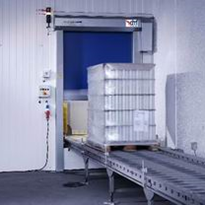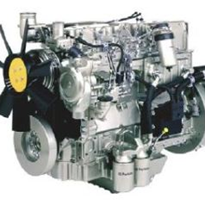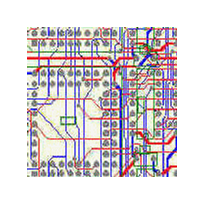While software as a service initially was seen as a handy adjunct to existing on-premise applications, it is now often replacing many of them. SaaS is rapidly becoming the new normal.
According to a global survey by research firm Gartner, establishing new capabilities or replacing existing applications are the two key drivers for adoption of SaaS.
This has changed from just a couple of years ago when the primary driver was augmentation of established systems.
The survey says 77 per cent of respondents plan to increase their spending on SaaS, with a further 17 per cent planning to maintain current spending levels.
"Seeing such high intent to increase spending isn't a huge surprise as the adoption of the on-demand deployment model has grown for more than a decade, but its popularity has increased significantly within the past five years," says Gartner research vice-president Charles Eschinger.
He says early concerns about service availability, security and application performance have declined as organisations come to understand how the model works and the market has matured.
Buoyed by this rapidly growing customer interest, SaaS vendors are racing to flesh out their offerings and position them as stable, flexible, cost-effective business tools.
On one side are enterprise software industry incumbents such as SAP, Oracle and Microsoft. On the other are SaaS industry natives such as Salesforce.com and NetSuite. Both camps believe they are best placed to deliver what corporate customers need.
NetSuite global chief executive officer Zach Nelson says it is the ability to customise SaaS offerings that sets the new generation of providers apart from the older software incumbents.
"Our customers are incredibly entrepreneurial and that is what drives innovation," he says. "They want to be able to adapt the software to suit their particular needs and that is what we offer in a SaaS form."
Originally established by Oracle chief executive Larry Ellison and chief technology officer Evan Goldberg, NetSuite has carved out a lucrative part of the growing SaaS market. Its customer base covers a broad range from multinational companies to small and mid-sized firms.
"Building a system to run a business is the core idea behind the company," says Nelson. "The idea was to take the power available to large companies and make it available for small and mid-sized ones."
Nelson says NetSuite's core architecture, which uses a single data store but presents it in different ways to different users, gives it a significant advantage over companies such as Oracle and SAP.
"Not all apps were built with customisation from the ground up," he says. "If you are just adding this to your product offering now, you have built your offering incorrectly."
Nelson points to recent additions to the portfolio such as SuiteCommerce, which gives users the ability to create a cloud-based retail system. Providing this kind of industry and task-specific focus will continue to drive the SaaS market during the next few years.
Salesforce.com Asia-Pacific and Japan area vice-president Charlie Wood agrees that the flexibility offered by SaaS platforms allows them to deliver true value to organisations.
"There is a shift in expectation from the customers of our customers, and this means our customers have to be more agile," he says. "They need to be able to connect with the right people at the right time."
Because Salesforce.com is only delivered using a SaaS mode, Wood says customisation can be achieved very quickly. Customers can add features and tweak options to ensure the software matches their business requirements as quickly as possible.
Wood says Salesforce.com has expanded its offering, through development and acquisition, beyond the traditional CRM space.
The company's portfolio now includes services that cover marketing and help desk functions.
While extolling the virtues of the SaaS model, Wood acknowledges there will still be a role for on-premise software as many companies prefer to use this approach for selected applications.
"It varies by company but I think we will always see demand for a mix of both hosted and in-house platforms," Wood says.
Sven Denecken, SAP vice-president of On Demand Solutions, also believes a mix of on-premise and hosted applications is the best fit for many companies.
SAP has invested heavily in its SaaS offerings and provides the Business ByDesign service to organisations around the world. Many companies use ByDesign in conjunction with SAP's larger and more sophisticated on-premise applications.
"Companies are looking to improve their velocity and ability to respond to new opportunities," Denecken says. "SaaS enables them to do this. However, companies realise that moving to a cloud platform should not be a 'rip and replace' exercise.
"They want to be faster, but they also realise their existing IT assets still have value."
This is a key reason why many find value in a hybrid approach. They can protect existing investments while also enjoying the flexibility offered by SaaS applications. "It is a matter of an organisation figuring out what product or platform best matches their requirements and going with that," Denecken says.
This ongoing demand for both hosted and on-premise resources has been the guiding force for software veteran Microsoft and the development of Dynamics ERP and CRM products. These offerings can be delivered as SaaS, hosted by a third-party provider or run in-house.
"We give customers the power of choice," says Microsoft Australia Dynamics head Thomas Gudman. "Customers can use the same software code in a SaaS model, hosted by a partner, or installed on premise.
This is a major differentiator as no other players in the market can offer this."
Gudman says many customers opt for a mixture of SaaS and on-premise to cover different business functions. The architecture of Dynamics means they are running the same code regardless of which platform is chosen.
Microsoft also talks up the fact that Dynamics products have the same look and feel as traditional packages such as Office. This means there is less staff training required than is the case with some alternative tools.
Gudman says he expects demand for SaaS versions of Dynamics to increase as organisations come to terms with issues such as data governance and sovereignty.
"This still remains a sensitive thing for many organisations," he says. "As vendors move to a maturity point where they can guarantee (sovereignty), it will be a trigger point for a lot more take-up (of SaaS services)."
- Suppliers
- New to IndustrySearch? Book a Demo
- Advertise with us
- Login
- Email Marketing
- Buyers
- Get Quotes
- Articles & Ideas
- Login
- Subscribe to newsletter
- My Details
- Get Quotes
- Automation & Control
- Automotive Workshop Equipment
- Commercial Cleaning Equipment & Supplies
- Construction Equipment & Heavy Machinery
- Conveyor Systems & Components
- Electrical & Power Generation Equipment
- Electronic Components
- Farming & Agriculture
- Food & Beverage Processing
- Forklifts & Forklift Attachments
- Hydraulic & Pneumatic Equipment
- Industrial Materials, Tools & Components
- Industrial Pumps
- IT Hardware & Industrial Computing
- IT Software & Applications
- Laboratory Equipment & Instruments
- Manufacturing & Industrial Equipment
- Material Handling & Lifting Equipment
- Metalworking & Machining
- Mining Equipment & Machinery
- Packaging & Labelling Machinery
- Pallet Handling Equipment
- Personal Protective Equipment
- Security & Surveillance
- Test & Measurement
- Transport & Logistic Equipment
- Warehouse Storage, Shelving & Racking
- Waste Treatment & Environmental Management
- Welding Machines & Accessories
- Woodworking & Joinery Machines
- Workplace Equipment
- Workplace Safety Equipment
- Get Quotes
- Automation & Control
- Automotive Workshop Equipment
- Commercial Cleaning Equipment & Supplies
- Construction Equipment & Heavy Machinery
- Conveyor Systems & Components
- Electrical & Power Generation Equipment
- Electronic Components
- Farming & Agriculture
- Food & Beverage Processing
- Forklifts & Forklift Attachments
- Hydraulic & Pneumatic Equipment
- Industrial Materials, Tools & Components
- Industrial Pumps
- IT Hardware & Industrial Computing
- IT Software & Applications
- Laboratory Equipment & Instruments
- Manufacturing & Industrial Equipment
- Material Handling & Lifting Equipment
- Metalworking & Machining
- Mining Equipment & Machinery
- Packaging & Labelling Machinery
- Pallet Handling Equipment
- Personal Protective Equipment
- Security & Surveillance
- Test & Measurement
- Transport & Logistic Equipment
- Warehouse Storage, Shelving & Racking
- Waste Treatment & Environmental Management
- Welding Machines & Accessories
- Woodworking & Joinery Machines
- Workplace Equipment
- Workplace Safety Equipment
Trusted by 1,000,000+ Australian industrial buyers
Buyers
- Discover products & solutions
- Login
- Subscribe To Newsletter
- Browse All Products
- Read Articles
Suppliers
Advertise
- Promote your products & solutions
- New to IndustrySearch? Book a Demo
- Login / Forgot Password
- Advertise Your Products
- Success Stories
- Email Marketing
- Suppliers
- Advertise with us
- Login
- Email Marketing
- Buyers
- Get Quotes
- Articles & Ideas
- Login
- Subscribe to newsletter
- My Details
Get Quotes
- Automation & Control
- Automotive Workshop Equipment
- Commercial Cleaning Equipment & Supplies
- Construction Equipment & Heavy Machinery
- Conveyor Systems & Components
- Electrical & Power Generation Equipment
- Electronic Components
- Farming & Agriculture
- Food & Beverage Processing
- Forklifts & Forklift Attachments
- Hydraulic & Pneumatic Equipment
- Industrial Materials, Tools & Components
- Industrial Pumps
- IT Hardware & Industrial Computing
- IT Software & Applications
- Laboratory Equipment & Instruments
- Manufacturing & Industrial Equipment
- Material Handling & Lifting Equipment
- Metalworking & Machining
- Mining Equipment & Machinery
- Packaging & Labelling Machinery
- Pallet Handling Equipment
- Personal Protective Equipment
- Security & Surveillance
- Test & Measurement
- Transport & Logistic Equipment
- Warehouse Storage, Shelving & Racking
- Waste Treatment & Environmental Management
- Welding Machines & Accessories
- Woodworking & Joinery Machines
- Workplace Equipment
- Workplace Safety Equipment
Get Quotes
- Automation & Control
- Automotive Workshop Equipment
- Commercial Cleaning Equipment & Supplies
- Construction Equipment & Heavy Machinery
- Conveyor Systems & Components
- Electrical & Power Generation Equipment
- Electronic Components
- Farming & Agriculture
- Food & Beverage Processing
- Forklifts & Forklift Attachments
- Hydraulic & Pneumatic Equipment
- Industrial Materials, Tools & Components
- Industrial Pumps
- IT Hardware & Industrial Computing
- IT Software & Applications
- Laboratory Equipment & Instruments
- Manufacturing & Industrial Equipment
- Material Handling & Lifting Equipment
- Metalworking & Machining
- Mining Equipment & Machinery
- Packaging & Labelling Machinery
- Pallet Handling Equipment
- Personal Protective Equipment
- Security & Surveillance
- Test & Measurement
- Transport & Logistic Equipment
- Warehouse Storage, Shelving & Racking
- Waste Treatment & Environmental Management
- Welding Machines & Accessories
- Woodworking & Joinery Machines
- Workplace Equipment
- Workplace Safety Equipment
Trusted by 1,000,000+ Australian industrial buyers














